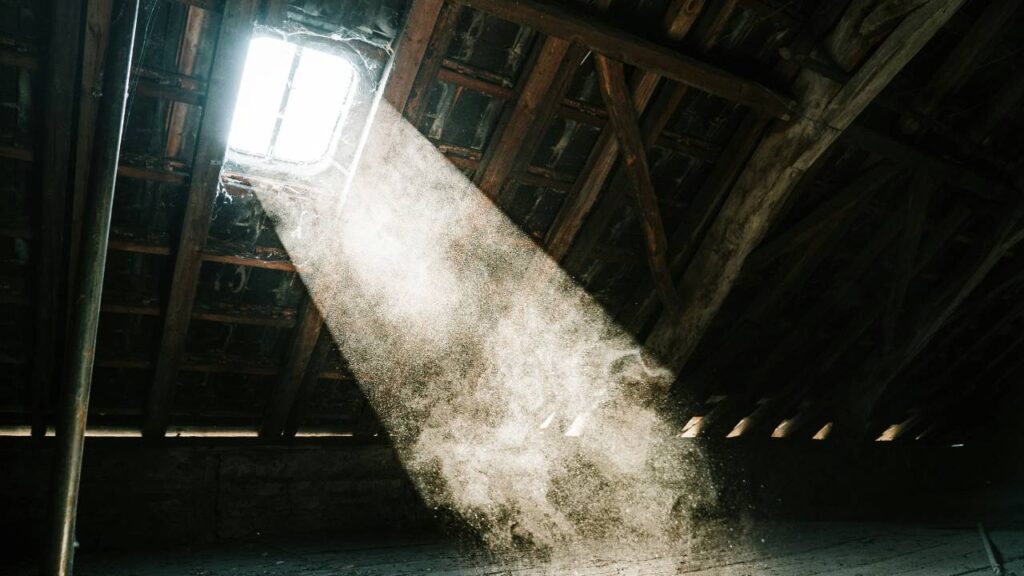Insulating your attic effectively in Ireland ensures your home stays comfortable year-round, while also helping with energy efficiency. By investing in the right type, you can significantly reduce heat loss during winter and keep your home cooler in summer. Choosing the best attic insulation can lead to lower energy bills and a more environmentally friendly household.
Ireland has unique climate considerations, so it’s crucial to pick materials that handle moisture well. Options like fibreglass, cellulose, and spray foam each offer different benefits. Understanding their performance in Irish weather conditions can make a significant difference in your home’s comfort and efficiency.
How do you know which one is right for your home? This guide will help you understand the advantages of each type, tailored for Ireland’s specific needs. Stay tuned to discover the best attic insulation for maintaining a cosy and energy-efficient home.
Understanding Attic Insulation in Ireland
Selecting the right attic insulation is crucial for maintaining comfortable indoor temperatures and reducing energy bills. When insulating attics in Ireland, it’s essential to consider the unique climate and the specific benefits of different insulation types.
The Importance of Insulation for Irish Homes
Attic insulation is vital in Irish homes to prevent heat loss, which can significantly increase energy bills. During winter, proper insulation keeps warmth inside, reducing the reliance on heating systems. In summer, insulation helps to keep the interior cool.
Irish homes often face damp conditions. Insulation can also help in managing moisture levels, preventing issues like mould and mildew. By investing in high-quality insulation, you can create a healthier indoor environment.
Climate Considerations in Insulation Choices
Ireland’s climate is characterised by mild, wet winters and cool summers. This climate influences the choice of insulation materials. You’ll need insulation that can withstand moisture and provides adequate thermal resistance.
Materials like fibreglass and mineral wool are common choices due to their effectiveness in various temperatures. Eco-friendly options like cellulose are also becoming popular. Properly installed insulation can help maintain steady indoor temperatures despite the fluctuating weather conditions in Ireland.
Types of Attic Insulation Materials
Choosing the right attic insulation can make a significant difference in energy efficiency and comfort. Different materials offer various benefits and drawbacks that can influence your decision.
Fibreglass Insulation
Fibreglass insulation is one of the most common types you might encounter. It consists of fine glass fibres and typically comes in batts, rolls, or loose-fill.
You will find that fibreglass is affordable and easy to install. It has excellent fire resistance and can effectively reduce heat transfer. However, it can be irritating to the skin and lungs, so make sure to wear protective gear during installation.
Fibreglass is durable but can lose effectiveness if it gets wet. Moisture reduces its insulating properties, so you should ensure it stays dry.
Cellulose Insulation
Cellulose insulation is made from recycled paper products. It is treated with chemicals to resist fire, mould, and pests.
This material is environmentally friendly and provides good thermal and sound insulation. It is typically blown into the attic, which allows it to fill gaps and cover irregular spaces more effectively.
One concern with cellulose is that it can settle over time, reducing its insulating power. Consider periodic checks to maintain its efficiency.
Mineral Wool Insulation
Mineral wool, also known as rock wool or slag wool, is produced from volcanic rock or industrial waste by-products. It is available in batts or loose-fill form.
Mineral wool is known for its excellent fire resistance and soundproofing qualities. It is denser than fibreglass and provides a higher R-value per inch, which is a measure of insulation’s effectiveness.
Despite its benefits, mineral wool can be more expensive than other insulation options. Also, it is slightly more challenging to cut and fit into place.
Spray Foam Insulation
Spray foam insulation is applied as a liquid that expands and hardens into a solid form. It comes in two main types: open-cell and closed-cell.
Spray foam can seal gaps and cracks better than other materials, offering superior air and moisture barriers. Closed-cell spray foam provides a higher R-value and can add structural strength to your roof.
The main drawbacks are its higher cost and the requirement for professional installation. DIY installation can be tricky due to the need for precise application techniques.
Insulation Boards
Insulation boards, or rigid foam boards, are made from materials such as polystyrene, polyisocyanurate, or polyurethane. They come in various thicknesses and sizes.
These boards are easy to handle and cut to fit between rafters or across joists. They offer excellent thermal resistance and can also act as a moisture barrier.
One limitation is that they require precise fitting to avoid gaps, which can reduce effectiveness. They are also more expensive compared to materials like fibreglass.
Choosing the right insulation material will depend on your specific needs, budget, and the characteristics of your attic space. Each material has its unique advantages and limitations.
Installation Techniques and Best Practices
Proper attic insulation involves choosing between professional installation and a DIY approach. Ensuring an airtight seal is crucial for effective insulation.
Professional Installation Versus DIY
Choosing between professional installation and DIY impacts the efficiency of your insulation. Professionals have the expertise and tools to install insulation correctly, ensuring optimal performance. They can identify and fix issues like gaps, ensuring an airtight seal.
On the other hand, DIY installation can save money but requires careful planning and execution. You need to choose the right materials and follow proper installation guidelines. Mistakes can lead to poor insulation performance, increasing energy costs.
Ensuring an Airtight Seal
Achieving an airtight seal is essential for effective home insulation. Gaps or leaks in the insulation can significantly reduce its performance, allowing air to escape or enter. Use high-quality sealants and tapes to cover any gaps between insulation panels.
Ensure insulation around pipes, ducts, and wires is tightly fitted. Pay extra attention to areas like the attic hatch or door, which are common sources of air leaks. Regular inspections and maintenance can help maintain an airtight seal, boosting your insulation’s overall effectiveness.
Maximising Energy Efficiency with Proper Insulation
To boost energy efficiency in your home, focus on R-values and the thickness of your insulation. These factors are key to preventing heat from escaping and maintaining a comfortable environment in your attic.
The Role of R-Values in Insulation
R-values measure insulation’s ability to resist heat flow. Higher R-values mean better insulation performance. In Ireland, aim for an R-value of at least R-50 for your attic to ensure minimal heat loss.
Selecting insulation with the right R-value helps keep your home warm in winter and cool in summer. This reduces energy consumption, leading to lower energy bills and a more environmentally-friendly household.
Different materials have varying R-values. Fibreglass, cellulose, and spray foam are popular choices. Compare these options to find the best fit for your needs. Remember, the proper R-value is crucial for optimal energy efficiency.
Insulation Thickness and Energy Savings
The thickness of your insulation plays a significant role in energy savings. Thicker insulation provides better coverage and reduces the rate at which heat escapes.
For attics in Ireland, a thickness of 250-300 mm is recommended for maximum energy efficiency. Keeping this in mind when installing new insulation or upgrading existing layers will make a big difference.
Adding layers of insulation can also be beneficial. Ensure each layer is properly installed to avoid gaps that can allow heat to escape. Focus on achieving the ideal thickness to maintain consistent indoor temperatures and lower your energy bills.
In conclusion, prioritising the right R-values and adequate insulation thickness will greatly enhance your home’s energy efficiency.
Costs and Financial Incentives for Insulation Upgrades
When considering attic insulation, understanding both the costs involved and the potential financial aids can help you make an informed decision. Good insulation can save you money in the long run while improving the comfort of your home.
Budgeting for Insulation
Attic insulation costs can vary based on factors such as material choice and attic size. Typical costs for insulation range from €30 to €50 per square metre. While this may seem like a sizable investment, effective insulation can reduce heating bills by up to 20%.
Here’s a brief overview of common materials and their price ranges:
| Insulation Type | Cost per Square Metre |
| Fibreglass | €30 – €40 |
| Rock Wool | €35 – €50 |
| Spray Foam | €45 – €60 |
Make sure to obtain quotes from different installers to find the best deal. Remember, investing a bit more initially for higher quality materials can lead to greater savings on your energy bills.
SEAI Grants and Incentives
In Ireland, the Sustainable Energy Authority of Ireland (SEAI) offers grants and incentives for insulation upgrades. Homeowners can receive grants of up to €1,500 for attic insulation. These grants can considerably offset the initial costs of installation.
To qualify for these grants, your home must meet certain criteria, such as age and energy efficiency standards. Additionally, the work must be carried out by an SEAI-registered contractor to ensure quality.
Here are some key points:
- Grant Amount: Up to €1,500
- Eligibility: Based on property age and energy standards
- Contractor Requirement: Must be SEAI-registered
Applying for these grants is a straightforward process through the SEAI website, which can provide a significant financial relief and help in achieving a more energy-efficient home.
Benefits and Impact on Environment
Choosing the best attic insulation can be both cost-effective and environmentally friendly. Eco-friendly insulation solutions contribute significantly to reducing your carbon footprint and enhancing the sustainability of your home.
Reducing Carbon Footprint with Eco-Friendly Insulation
By opting for eco-friendly insulation materials, you can lessen your home’s carbon footprint. These materials, such as recycled cotton, cellulose, and sheep’s wool, are made from renewable resources and produce fewer emissions during manufacturing.
Effective insulation reduces energy consumption because it helps maintain a stable indoor temperature. This means your heating and cooling systems work less, leading to lower energy bills and fewer carbon emissions.
Insulating your attic is a simple yet impactful way to support sustainability. By doing so, you’re not only improving your home’s energy efficiency but also contributing positively to the environment.
Eco-friendly insulation materials have a longer lifespan and lower waste production, further adding to their sustainability benefits.
Complementary Energy Solutions
Enhancing your attic insulation can be more effective when paired with other energy-efficient options like solar panels and heat pumps. These solutions not only reduce your carbon footprint but can also save you money in the long run.
Solar Panels and Renewable Energy Options
Using solar panels can significantly cut your electricity bills. In Ireland, solar panels work even during overcast days, making them a viable option for renewable energy. You might be eligible for Solar Panel Grants Ireland, which can help offset the initial installation costs.
Solar panels generate electricity that can power your home, including heating systems. This reduces dependence on non-renewable energy sources. Installing solar energy solutions complements attic insulation by maximising overall energy efficiency, enabling a more sustainable household.
Heat Pumps and Their Synergy with Insulation
Heat pumps are an efficient way to heat your home, extracting warmth from the air, ground, or water. They work especially well when your home is properly insulated. When combined with good attic insulation, heat pumps operate more efficiently, providing consistent warmth.
Seeking Heat Pump Quotes can give you an idea of the investment required. Heat pumps paired with energy-efficient insulation like that in your attic can reduce heating costs and greenhouse gas emissions. This combination enhances your home’s overall energy performance, making it an excellent long-term investment.
Additional Considerations and Enhancements
When upgrading your attic insulation, it’s crucial to consider soundproofing and fire resistance, as well as the insulation of tanks and pipes in the attic space.
Soundproofing and Fire Resistance
Soundproof insulation can make your home more peaceful by reducing noise from outside and between rooms. Materials like rock wool and fibreglass are excellent for this purpose due to their dense composition. Both types can absorb sound waves, preventing them from passing through walls and ceilings.
Fire-resistant insulation materials add an extra layer of safety. Products such as mineral wool and fibreglass offer high fire resistance and don’t easily ignite. Intumescent coatings can also be applied to existing insulation to protect against fire. Prioritising fire-resistant materials can provide peace of mind and enhance the overall safety of your home.
Insulating Tanks and Pipes in the Attic Space
Tanks and pipes in the attic space need proper insulation to prevent heat loss and freezing. Pipe insulation sleeves, typically made from foam or rubber, help maintain water temperature and prevent pipes from bursting in cold weather. This ensures your heating system works efficiently and reduces energy costs.
Water tanks, particularly those in unheated attic spaces, should be insulated with tank jackets. These jackets help to keep the water temperature stable, reducing the risk of freezing. Adding insulation to the tank’s sides and top ensures maximum efficiency. Protecting these elements is essential for maintaining a reliable plumbing system.


